1943
January 1, 1943: As per the terms of the Georgian, Armenian and Azerbaijani non-aggression pacts with Germany, a large number of Georgian, Armenian, Azerbaijani soldiers fighting with the Wehrmacht and SS are repatriated to their respective home countries. The overwhelming majority of Armenian nationalists, such as Drastamat Kanayan and Garegin Nzhdeh, also return to Armenia.
Drastamat Kanayan
Garegin Nzhdeh
January 3, 1943: The Germans complete their occupation the Caucasus.
January 9, 1943: After thirteen days of battle, the Second Battle of the Nile ends in an Allied victory. General Rommel surrenders to the Allied armies under General Patton. Rommel's army is also taken captive by the Allied armies under General Patton.
January 10, 1943: General Hans-Jürgen von Arnim replaces General Rommel as the head of the Afrika Corps.
Hans-Jürgen von Arnim
January 12, 1943: Allied forces invade Damascus. The Allies invade Damascus with the British armies under Archibald Wavell and Henry Maitland Wilson, the ANZAC armies under John Lavarack and the Free French armies under Paul Legentilhomme. The Germans defend Damascus with 7th Army under Walther von Reichenau and 12th Army under Alexander Löhr.
January 19-January 29, 1943: US President Franklin D. Roosevelt and British Prime Minister Winston Churchill hold the Havana Conference at the Hotel Nacional in Havana, Cuba [1]. During the conference, Roosevelt and Churchill announce that the war can end only with an unconditional German surrender.
Franklin D. Roosevelt, Winston Churchill and others at the Hotel Nacional during the Havana Conference, January 1943
January 24, 1943: Erwin Rommel is transported to the Lethbridge POW camp outside of the aforementioned city in Alberta, Canada.
January 27, 1943: The first bombing raid by Americans on Germany takes place at Wilhelmshaven.
February 1, 1943: Erwin Rommel arrives at the Lethbridge POW camp in Alberta, Canada.
February 8, 1943: The Allied invasion of Spanish Mozambique begins. The South African campaign of World War II begins. The Allies invade Spanish Mozambique with the British commonwealth armies, prominently including Rhodesian armies, under General Alan Cunningham from Northern and Southern Rhodesia, General Alfred Reade Godwin-Austen from Tanginyka, General Neil Ritchie from Nyasaland, the South African armies under Major-General Isaac Pierre de Villiers from the Transvaal Province of South Africa, and even armies from the Belgian Congo, Free France and Ethiopia from Tanginyka.
February 18, 1943: The Nazis arrest White Rose resistance leaders in Munich.
February 21, 1943: The Battle of Damascus ends in an Allied victory as the city is recaptured from the Germans by the British, ANZAC and Free French armies.
March 16-20, 1943: The Battle of Atlantic climaxes with twenty-seven merchant ships sunk by German U-boats.
March 19, 1943: The Dieppe Raid, also known as Operation
Jubilee, is conducted by over 6,000 Allied infantrymen, most of whom are Canadian. The raid ends in a failure for the Allies and in a German victory. Nevertheless, the Allies will learn from the mistakes of the Dieppe Raid when they plan for the final invasion of mainland Europe over three years later in 1946.
The beach of Dieppe just after the end of the aforementioned raid, with a Dingo Scout Car in the foreground, March 19, 1943
March 25, 1943: The last German forces are driven out of Syria and back into Turkey. The Oriental or Middle Eastern Campaign of World War II ends.
April 6, 1943: The Armenian Revolutionary Federation launches a coup against the communist government of the Armenian Soviet Republic in Yerevan. First Secretary Grigor Harutyunyan is arrested and put under house arrest by the Armenian Revolutionary Federation. The Second Republic of Armenia is established with Garegin Nzhdeh as interim President.
Flag of the Second Republic of Armenia
April 12, 1943: After over two months, the Allied invasion of Spanish Mozambique ends in an Allied victory. Mozambique is then handed back over to the Free Portuguese Government.
April 19, 1943: The Waffen-SS attacks Jewish resistance in the Warsaw ghetto.
April 25, 1943: The Allied invasion of Spanish Angola begins. The Allies invade Spanish Angola with the British commonwealth armies under General Alan Cunningham, General Alfred Reade Godwin-Austen and General Neil Ritchie from Northern Rhodesia, the South African armies under Major-General Isaac Pierre de Villiers from South-West Africa, the Free French armies under General Edgard de Larminat from French Congo in French Equatorial Africa and the Belgian Congo armies under
Force Publique officer Auguste Gilliaert from the Léopoldville province of the Belgian Congo.
April 27, 1943: The Battle of Madagascar, the Allied invasion of Vichy French Madagascar, begins. The allies invade Vichy French Madagascar with the British commonwealth armies under Lieutenant General Sir Robert Sturges, the British Royal Navy under Admiral Sir Edward Neville Syfret, as well as Free Dutch naval forces and non-combatant support from the Belgian Congo and the Polish government-in-exile. The Vichy French defend Madagascar with the Vichy French armies under Governor Armand Annet, as well as Imperial Japanese naval forces under Admiral Ishizaki Noboru.
Allied soldiers landing at Tamatave, April 28, 1943
May 4, 1943: After a nine-day siege, the Cabinda region of Angola is captured by a combined force of Free French and Belgian armies. The oil from Cabinda will almost immediately go towards the Allied war effort.
May 16, 1943: Jewish resistance in the Warsaw Ghetto ends.
May 16-17, 1943: The British conduct an air raid on the industrial Ruhr Valley of Germany.
May 19, 1943: General Charles de Gaulle, leader of the Free French forces, fearing that Canada may seek to annex the Vichy French-held islands of Saint Pierre and Miquelon, secretly orders the Free French invasion of the aforementioned islands.
May 24, 1943: The Free French invasion of Saint Pierre and Miquelon takes place when three Free French corvettes and the Free French submarine Surcouf led by Rear-Admiral Émile Muselier easily invade the islands. Within a just a few hours, the Vichy French officials on the islands surrender to the Free French. Saint Pierre and Miquelon is then annexed by Free France.
June 11, 1943: SS-Reichsführer Heinrich Himmler orders the liquidation of all Jewish ghettos in Poland.
June 15, 1943: The 'Pointblank' directive is issued in an effort to improve Allied bombing strategy.
June 24, 1943: The British Royal Air Force conducts a bombing raid on Hamburg.
July 1, 1943: The Allied invasion of Spanish Angola ends in an Allied victory. The South African campaign of World War II ends. Angola is then handed back over to the Free Portuguese Government.
July 3, 1943: The Free French armies under General Edgard de Larminat and the British Royal Navy invade Spanish Guinea and Spanish São Tomé and Príncipe.
July 7, 1943: The invasion of Spanish Guinea ends in an Allied victory. Spanish Guinea is occupied by the Free French.
July 9, 1943: The invasion of Spanish São Tomé and Príncipe ends in an Allied victory. São Tomé and Príncipe is then handed back over to the Free Portuguese Government.
July 19, 1943: Operation Guillotine, the Allied invasion of Vichy French North Africa, begins. The majority of the Allied armies, the American armies, invade Algeria from the sea, while the armies of the British Commonwealth invade both from the sea and from British-occupied Morocco. The Allies invade with the American armies under General Dwight D. Eisenhower and Omar Bradley, and the British commonwealth armies under General Kenneth Arthur Noel Anderson and Admiral Andrew Cunningham. The Vichy French defend with their own armies under General Maxime Weygand, General Alphonse Juin and Admiral Frix Michelier and the German Kriegsmarine under
Kapitän zur See Ernst Kals.
Dwight D. Eisenhower
Andrew Cunningham
American forces landing near Algiers, July 19, 1943
July 27, 1943: The Vichy French forces under General Maxime Weygand and General Alphonse Juin surrender to the Allies and join both the Allied and Free French causes.
Alphonse Juin
July 28, 1943: The Vichy French armies in North Africa officially join the Free French Forces.
July 29-July 30, 1943: An Allied air raid causes a firestorm in Hamburg.
August 6, 1943: Great Britain returns the French Protectorate of Morocco to the Free French and continues to occupy Spanish Morocco.
August 14-August 15, 1943: The British Royal Marines under General Sir Alan Bourne invade Spanish Cape Verde. Cape Verde is then handed back over to the Free Portuguese Government.
August 17, 1943: The Americans conduct daylight air raids on the German cities of Regensburg and Schweinfurt.
August 26, 1943: The British Royal Marines under General Sir Alan Bourne and the Free French armies under General Alphonse Juin invade Spanish Guinea.
September 1, 1943: The Allied invasion of Spanish Guinea ends in an Allied victory. Guinea is then handed back over to the Free Portuguese Government. With that, Spain loses all of its colonial possessions.
September 8, 1943: The Spanish Fort of San Juan Baptista de Ajudá, formerly known as São João Baptista de Ajudá, a fort on the coast of Dahomey, is invaded by Free French armies under General Alphonse Juin. The Fort of São João Baptista de Ajudá is then handed back over to the Free Portuguese Government.
September 12, 1943: Fernand Bonnier de La Chapelle, a 21-year old Orleanist monarchist and member of the French Resistance, assassinates General Maxime Weygand in Algiers, the new capital of Free France. Fernand Bonnier de La Chapelle shots General Weygrand in the chest three times with a Modèle 1935 pistol, killing him almost instantly.
Maxime Weygand (1/21/1867-9/12/1943, aged 76)
September 14, 1943: Fernand Bonnier de La Chapelle is executed by firing squad by the Allies in Algiers.
Fernand Bonnier de La Chapelle (?/?/1922-9/14/1943, aged 20 or 21)
September 26, 1943: The Tunisian Campaign begins when the Allies invade Italian Tunisia. The Allies invade Italian Tunisia with the American armies under General Dwight D. Eisenhower and General Omar Bradley, the British armies under General Harold Alexander and General Kenneth Arthur Noel Anderson, as well as Free French, Canadian, Australian, New Zealand and South African armies. The Axis defends Tunisia with the German armies under Albert Kesselring and Walther Nehring and the Italian armies under Giovanni Messe.
Harold Alexander
Albert Kesselring
October 4, 1943: The Allied counter-offensive from the Sinai Peninsula into the heart of Egypt begins. The Battle of Cairo begins. The Allies invade with the American armies under General George S. Patton, the British armies under General Bernard Montgomery, as well as with Canadian, Australian, New Zealand, South African and Free French armies. The Axis defends Cairo with the German armies under General Hans-Jürgen von Arnim, Georg Stumme, Wilhelm Ritter von Thoma and the Italian armies under Ettore Bastico.
October 8-October 12, 1943: The Vichy French islands of Comoros and Mayotte are invaded and annexed by Free French amphibious forces with support from British amphibious forces and the British Royal Navy.
October 15, 1943: The Battle of Madagascar ends in an Allied victory. Madagascar is occupied by the British while a Free French administration is put into place on the island.
October 18, 1943: Tunis falls to the Allied armies.
October 19, 1943: The Tunisian Campaign ends in an Allied victory. Tunisia is annexed by Free France. Muhammad VIII al-Amin is instated by the Free French as the Dey of Tunis.
A British Churchill tank in Tunis, October 19, 1943
October 21, 1943: The Allies invade Italian Libya from Free French Algeria and Free French Tunisia. The Battle of Tripoli begins. The Allies invade Italian Libya with the American armies under General Dwight D. Eisenhower and General Omar Bradley, the British armies under General Harold Alexander and General Kenneth Arthur Noel Anderson, as well as with Free French, Canadian, Australian, New Zealand and South African armies. The Axis defends Italian Libya with the German armies under Albert Kesselring and Walther Nehring and Italian armies under Giovanni Messe.
October 27, 1943: The Battle of Cairo ends in an Allied victory. Cairo is recaptured by the Allies.
October 28, 1943: King Farouk of Egypt is deposed by the British for collaborating with the Germans. The Egyptian throne is temporally vacant.
October 30, 1943: The Nile River is recaptured by the Allies.
November 2, 1943:
The Second Battle of El Alamein begins. The Allies invade El Alamein with the American armies under General George S. Patton, the British armies under General Bernard Montgomery, as well as with Canadian, Australian, New Zealand, South African and Free French armies. The Axis defends El Alamein with the German armies under General Hans-Jürgen von Arnim, Georg Stumme, Wilhelm Ritter von Thoma and the Italian armies under Ettore Bastico.
Soldiers of the 9th Australian Infantry Division in a posed attack during the Second Battle of El Alamein, November 3, 1943
November 5, 1943: King Farouk moves to and begins living a life of exile in Davos, Switzerland.
November 7, 1943: Muhammad Abdel Moneim, a relative of King Farouk II, is installed by the British as King Muhammed of Egypt.
King Muhammad of Egypt
November 9, 1943: The Battle of Réunion takes place when Free French forces under Jules Evenou and André Capagorry conduct an amphibious invasion of Vichy French Réunion defended by Pierre Aubert and Émile Hugot. The battle ends in a Free French victory. Réunion is annexed by Free France.
November 13, 1943: General Eisenhower and General Alexander lead the Allied armies to victory against the Afrika Corps at the Battle of Tripoli, the battle thus ending in an Allied Victory.
November 18, 1943: The British Royal Air Force conducts a large-scale air raid on Berlin.
November 20, 1943: General Patton and General Montgomery lead the Allied armies to victory against the Afrika Corps at the Second Battle of El Alemain, the battle ending in an Allied Victory.
November 22, 1943: The Allies invade Italian Libya from British-occupied Egypt. The Battle of Tobruk begins. The Allies invade Italian Libya and Tobruk with the American armies under General George S. Patton, the British armies under General Bernard Montgomery, as well as with Canadian, Australian, New Zealand, South African and Free French armies. The Axis defends Tobruk with the Italian armies under Marshal Rodolfo Graziani.
Rodolfo Graziani
November 25, 1943: The Battle of Tobruk ends in an Allied Victory.
December 2, 1943: The Afrika Coprs under General Hans-Jürgen von Arnim surrenders to the Allied armies at Leptis Magna. General Von Armin is then taken into captivity by the Allies.
December 6, 1943: Italian Libya is divided between Great Britain and Free France. Great Britain occupies Tripolitania and Cyrenaica. Free France occupies Fezzan. With that, Italy loses all of its colonial possessions.
December 12, 1943: Case Anton, the German, Italian and Spanish invasion of Vichy France, begins. The Axis invades Vichy France with German 1st Army under General Joachim Lemelsen.
Joachim Lemelsen
December 23, 1943: The USAAF and RAF began heavy bombing campaigns across Spain, including in Spanish-occupied Portugal.
December 25, 1943: On Christmas Day, Chief of the French State Philippe Petain gives a strongly worded radio address condemning the Axis invasion of Vichy France.
December 26, 1943: As a result of Case Anton and pressure from the Axis armies, Philippine Petain resigns as Chief of the French State and is replaced as such by Admiral Francois Darlan. Petain is then arrested by the Wehrmacht. Case Anton ends. Most of Vichy France is occupied b
y Germany. Italy occupies much of south-western France and Corsica. Spain occupies the French Basque Country and French Northern Catalonia.
December 28, 1943: Philippine Petain is imprisoned by the Wehrmacht in the Fort du Portalet, a fort in the Aspe valley in Bearn in the French Pyrenees.
December 29, 1943: The French Fleet from Toulon is intercepted by the US Navy and the British Royal Navy at the Straits of Gibraltar. Admiral Jean de Laborde surrenders the fleet to the Allied navies who in turn hand control of the fleet over to the Free French Navy.
Jean de Laborde
December 31, 1943: The French Fleet from Toulon, now under the control of the Free French Navy, docks at different ports in the cities of Algiers, Oran and Constantine.
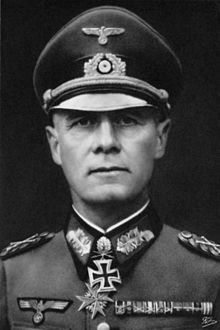



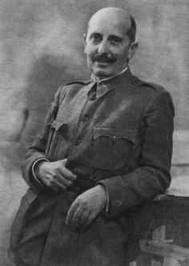
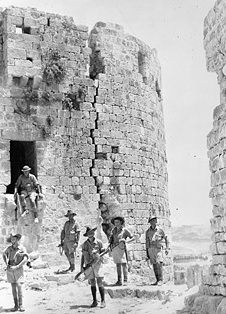

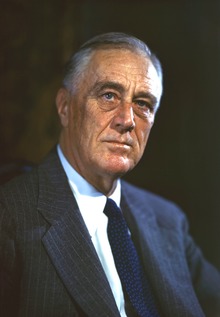
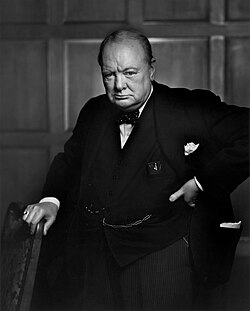
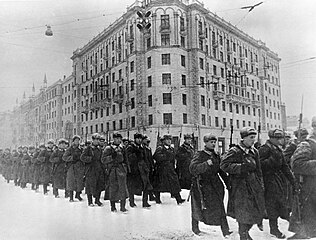



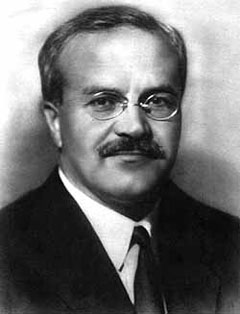

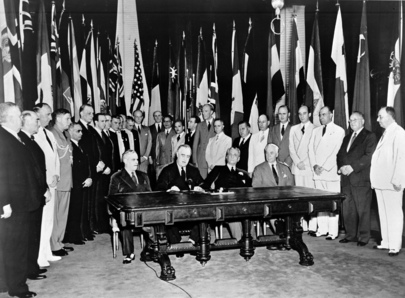

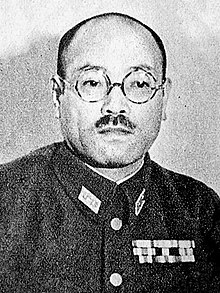


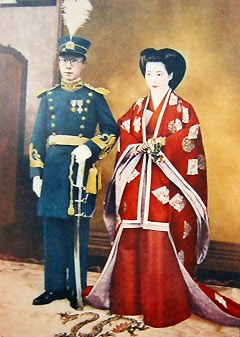
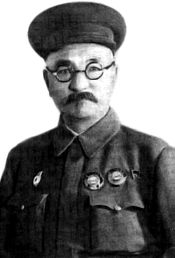









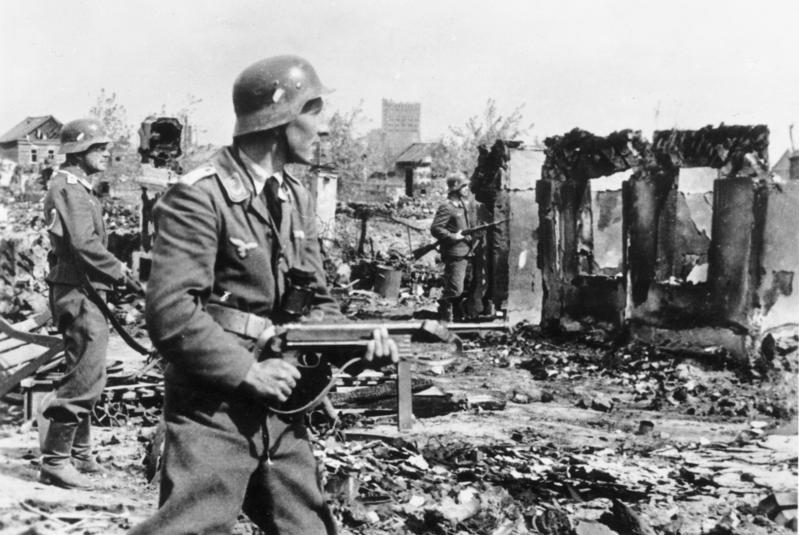


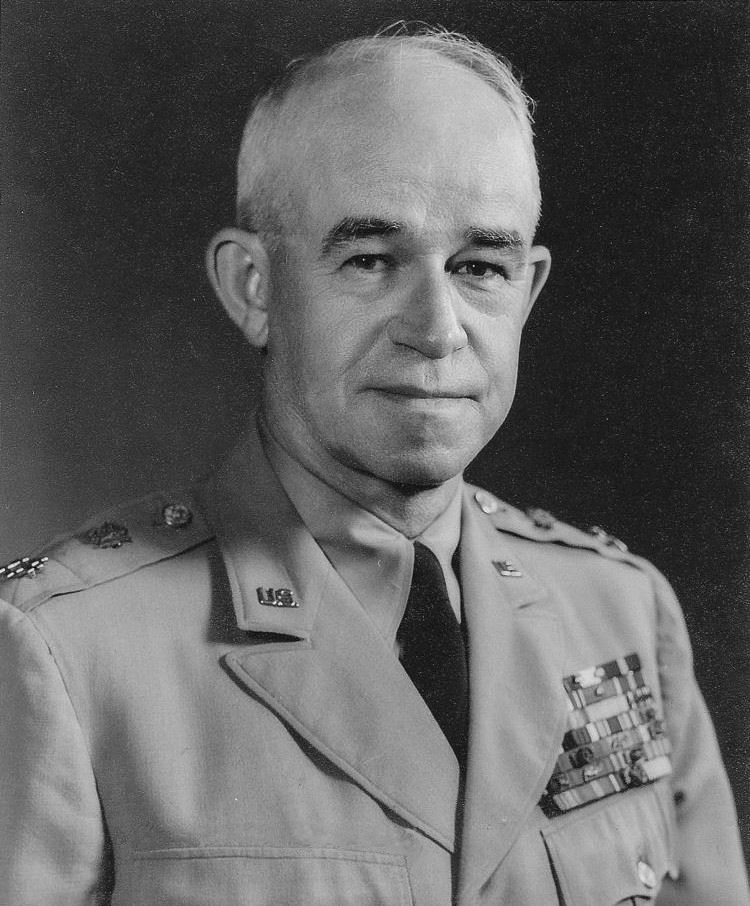



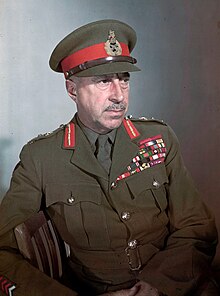
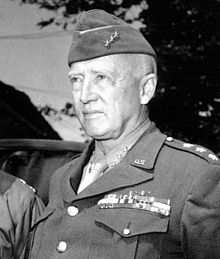










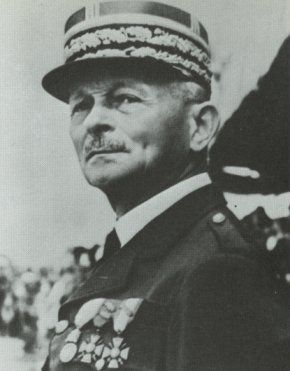

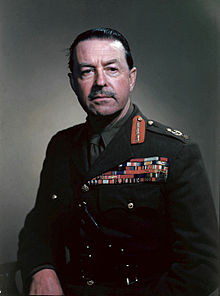

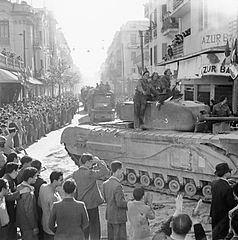
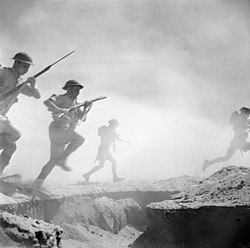

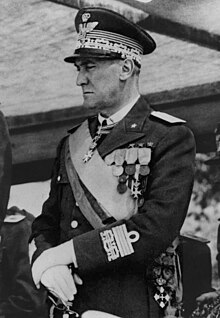




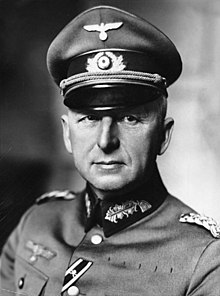
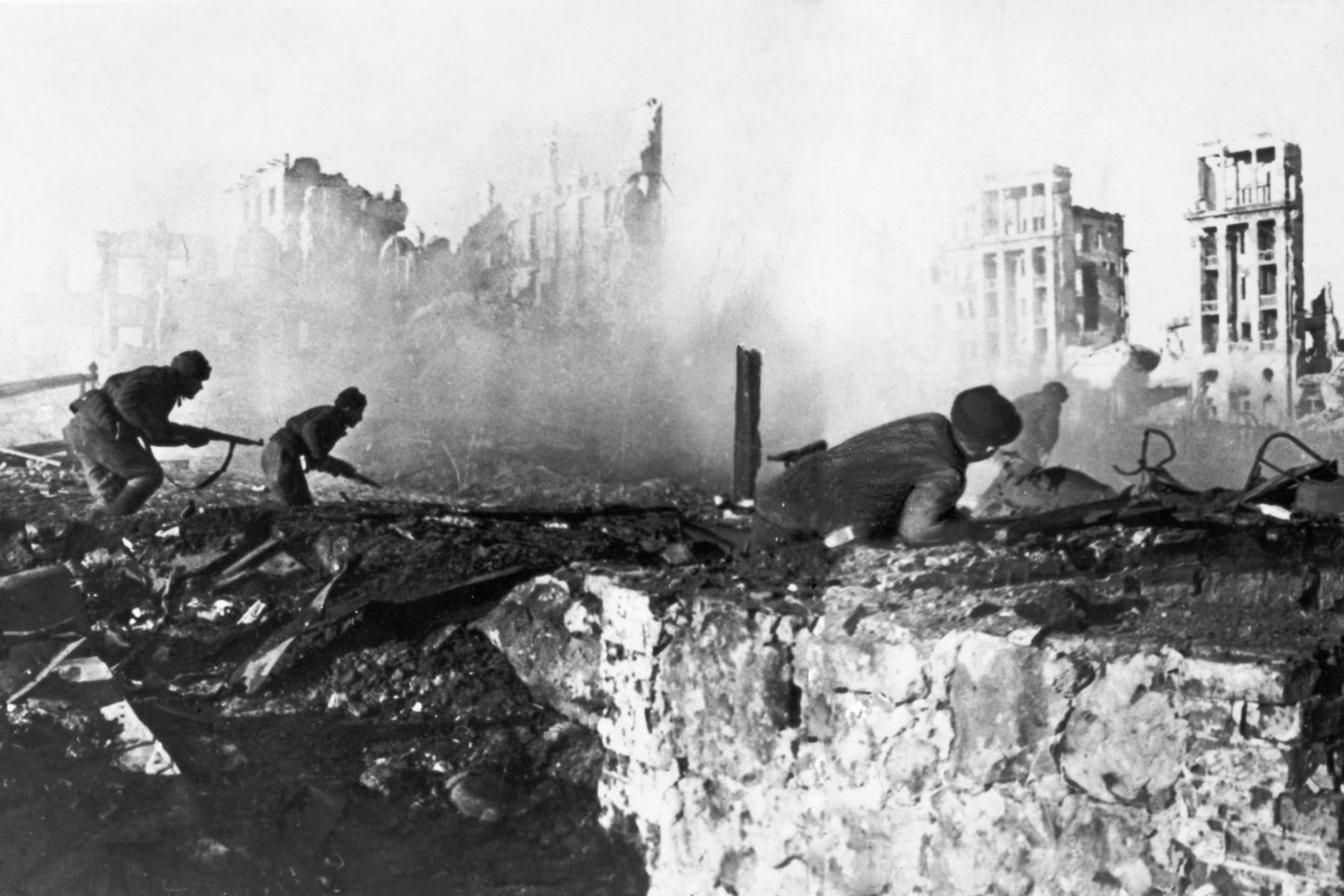
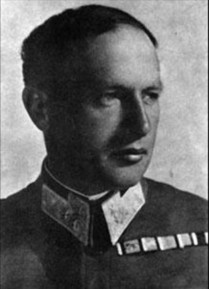







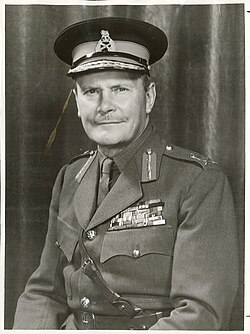
.jpg/220px-Wendell_Willkie_cph.3a38684_(cropped).jpg)